* This article was originally published here
Make Money Online Fast Discover proven ways to make money online quickly with affiliate marketing, legit side hustles, digital courses, and expert tips. Learn how to start earning today — no experience needed. Explore honest reviews of top programs, essential tools, and high-converting strategies to build income from home or anywhere in the world. Perfect for beginners, side hustlers, freelancers, and anyone ready to create real financial freedom.
Make money online fast
Make Money Online Fast: The Ultimate Guide to Earning Quickly in 2025
Introduction Want to make money online fast? Whether you need extra cash or want to build a full-time income, the internet offers endless ...
Monday, July 31, 2023
How to make money on X (formerly Twitter) | Inquirer Technology - Inquirer.net
* This article was originally published here
How To Become a Better Business Coach
Coaching is one of those things that sounds easy until you try it. Any business coach can tell you it requires a balance of expertise, leadership, and deft emotional intelligence — and that balance is different from one client to the next.
To be honest, sometimes that balance needs to shift within a single meeting.
Even the best coaches have frustrating client meetings that leave them questioning themselves long after.
Why did that meeting go so poorly? Why were they so unable to follow my guidance?
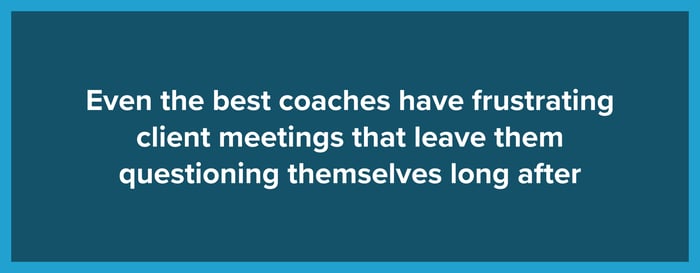
And while you can never become a perfect coach, you must always be striving to hone your craft, improve your ability to ask great questions, and deepen your knowledge.
Below, I'll outline some important focal points:
- Establishing yourself as an authoritative guide
- Becoming a proactive learner
- Maintaining your client’s attention
- Providing feedback and directions fearlessly
- Communicating clearly
This is where to focus to become the effective coach your clients need.
Establishing yourself as an 'authoritative guide'
In every coaching relationship, there is someone giving guidance and someone being guided.
In a healthy coach-client relationship, your client values your insight and listens to your direction as their guide because they know everything you're doing is with their best interest in mind.
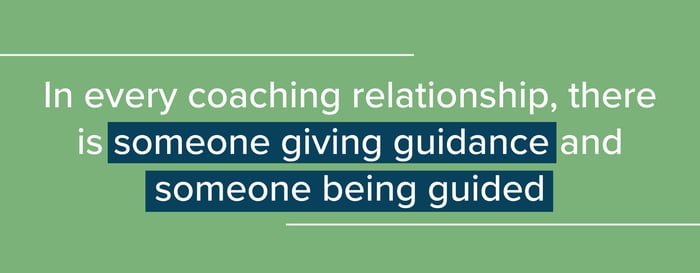
When we lose our footing as coaches, the client suffers.
How to (re)establish yourself as an authoritative guide
- Be clear about what your client must do to accomplish the agreed-upon goals
To avoid having aimless meetings, have your strategy mapped out, top to bottom.
When you’re coaching a business, the decision-makers need to feel confident in your ability to lead their team members.
Provide clear direction with statements such as, “Here is our focal point for today,” or, “These are the important next steps for you to accomplish your goals.”
By having a framework in place for your client, you can guide them definitively in the right direction. - Run meetings on your terms
Set the ground rules and agenda for each meeting.
Set the precedence that if all the necessary decision-makers aren’t able to attend, you will reschedule.
If you accomplish everything you need to do early in your meeting, give a bulleted list of what your client needs to complete before the next session. - Minimize unnecessary small talk
Start your meetings by saying something like, “We have a lot to accomplish together, so I’ll jump right in.” This shows your client you are able to provide their team with immediate value. - Thank them for bringing their A-game (not for their time)
When you thank a client for meeting with you, you’re sending the signal that they are doing you a favor by being present, and this undermines your position as the guide.
Set the tone that you have the advice and direction they need to make things work — and if they follow your direction, they’ll see incredible results.
Will there be moments when these rules don’t apply? Sure. But establishing your position of guidance is why your client hired you in the first place, so don't lose it.

Also, keep in mind that it isn’t about beating your client or dominating the room — and it certainly isn’t about being a jerk. Establishing yourself as an authoritative guide needs to come from a place of caring.
If you keep the best intention in mind for your client while you develop these skills, your client will appreciate your help and work hard to accomplish the tasks you’ve set for them to do.
Soon, you’ll see your clients trying to impress you with what they’ve achieved instead of the other way around.
Becoming a proactive learner
Great coaches constantly take the initiative to seek new information, but they don’t just read a book or take a course and then sit on it — they apply that information immediately in their day-to-day work.
To build this skill:
- Dedicate time to learning each day, whether it’s for a few minutes or hours. The more you do this, the more you will make it into a habit, and the better it will stick.
- Once you learn something new, discuss it with colleagues and get their feedback. This helps reinforce what you’re learning so you can bring it to your clients in a clear, direct way.
- Always ask yourself, “How can I apply what I’m learning to my work and life?”
- Don’t be afraid to learn outside of your niche.
- Have goals in place to learn something new that enhances your coaching business on a regular basis.
A constant habit of learning keeps you relevant and more desirable to your clients.
Coaching shouldn’t be something you do alone — we all need accountability and people to share our successes and struggles with.
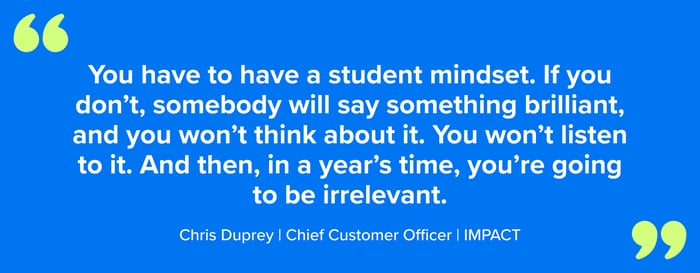
Take time to join a group of peers so you can see what they’re learning and reading.
A study group gives us the momentum we need to keep learning and increasing the value we provide our clients with.
Maintaining your client’s attention
This might sound obvious, but it's worth saying: You need to keep and hold your clients' attention. Failing to do so is an easy trap to fall into and can be detrimental to your ability to lead.
Set expectations before meeting that all cameras will be turned on (if the meeting is virtual), and get everyone to agree that they need to be present in body and spirit.
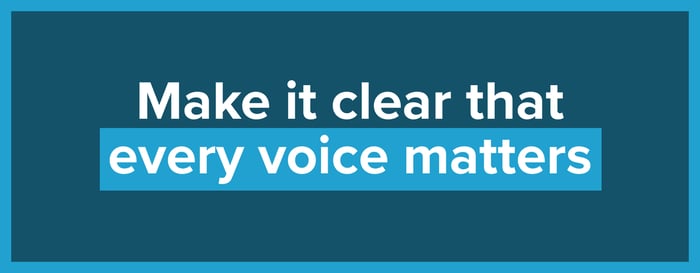
You should always have a plan to refocus the meeting if needed. For example, if you see someone checking their phone or working from a different screen, ask them a question directly to politely bring them back into the conversation.
Don't bully or demean. Just set firm expectations and make it clear that every voice matters.
Call people by name and be specific and clear with your questions (Ben, what is one thing you struggle with here?), and be comfortable with silence.
Bring all voices and opinions into the conversation to keep attention focused where it should be.
Providing feedback and direction fearlessly
One of the most difficult coaching skills to master is learning how to provide feedback to your clients as directly and honestly as possible.
We live in a world stymied by politeness. We tell white lies to avoid unpleasant truths. We hold our tongues to avoid giving feedback.
This is not an option as a coach. Your job is to practice radical candor and tell the truth your clients need to hear.
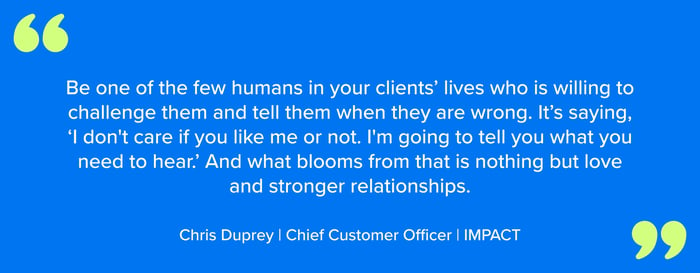
Successful coaches don’t aim to please their clients, they guide them to successful outcomes.
You need to communicate how to get from point A to point B in a way your client can follow. If there is something your clients lack or a blindspot that is impeding their progress, you need to be candid about it.
But as in all things, candor works best when it comes from a place of caring, as Kim Scott explains in her book Radical Candor.
If your honesty comes from a place of caring about your client’s success, more often than not, they will see that you care deeply and respect your leadership more, not less.
Communicating clearly
When coaches dance around a topic or take a long time getting to the point, they sound like they don’t know what we’re talking about, which makes it difficult for clients to trust their counsel.
Start by shortening what you say. Too often, we see coaches bundle questions on top of questions. Or, they offer long-winded and circuitous guidance.
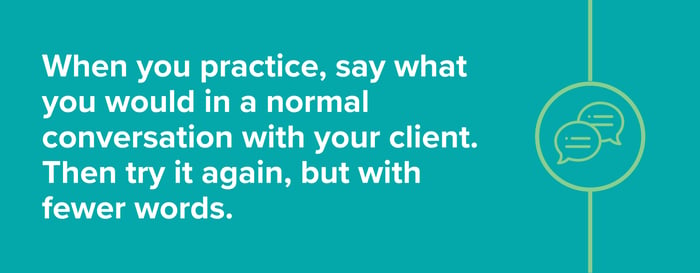
Role-playing can help you practice concision and clarity.
When you practice, say what you would in a normal conversation with your client. Then try it again, but with fewer words.
Keep practicing your communication skills until you are an expert at being direct and straight to the point. When you are as succinct as possible, you are more clear.
Take the next big leap in your coaching career and learn how to be a better mentor
You cannot be a great coach without top-level communication skills. You could have all the expertise and insight in the world, but if you can't communicate it, you can't deliver value.
But that doesn't mean providing a lecture.
Great coaches ask questions and prompt self-discovery. They listen as much as they talk.
And great coaches never stop learning. They need coaching just as much as their clients do.
Find your mentors, keep practicing, and become indispensable to your clients.
* This article was originally published here
Sunday, July 30, 2023
Boost Your Earnings: The Top Sports Betting Affiliate Programs to ... - Punjab News Express
X Tests New Ad Display, Which Would Replace its ‘Promoted’ Tags
X appears to be testing out a new ad format.
* This article was originally published here
Saturday, July 29, 2023
Friday, July 28, 2023
X Expands Community Notes Program, Adds ‘Top Writer’ Badge for Highly Rated Contributors
X continues to expand its crowd-sourced fact-checking system.
* This article was originally published here
Thursday, July 27, 2023
What is the Inbound Marketing Funnel? (+ Examples)
Technology provides us with an infinite amount of data. Buyers today are more equipped than ever with information readily available at their fingertips.
But since technology is constantly changing, buying behavior is too. That’s why inbound marketing continues to be the most effective way to reach your ideal buyer in the digital age.
Inbound focuses on getting customers to come TO you by creating content they want to consume.
Your business earns ideal customers’ attention at different stages of their purchasing journey.
To put it simply, Customers seek you out instead of the other way around.
This type of marketing focuses on delivering quality content to your audience when and where they want it. That means being at the right place at the right time throughout the different stages of the buyer’s journey — awareness, consideration, evaluation, and decision.
Whether you’re searching for inbound marketing advice, the inbound marketing funnel can help guide you:
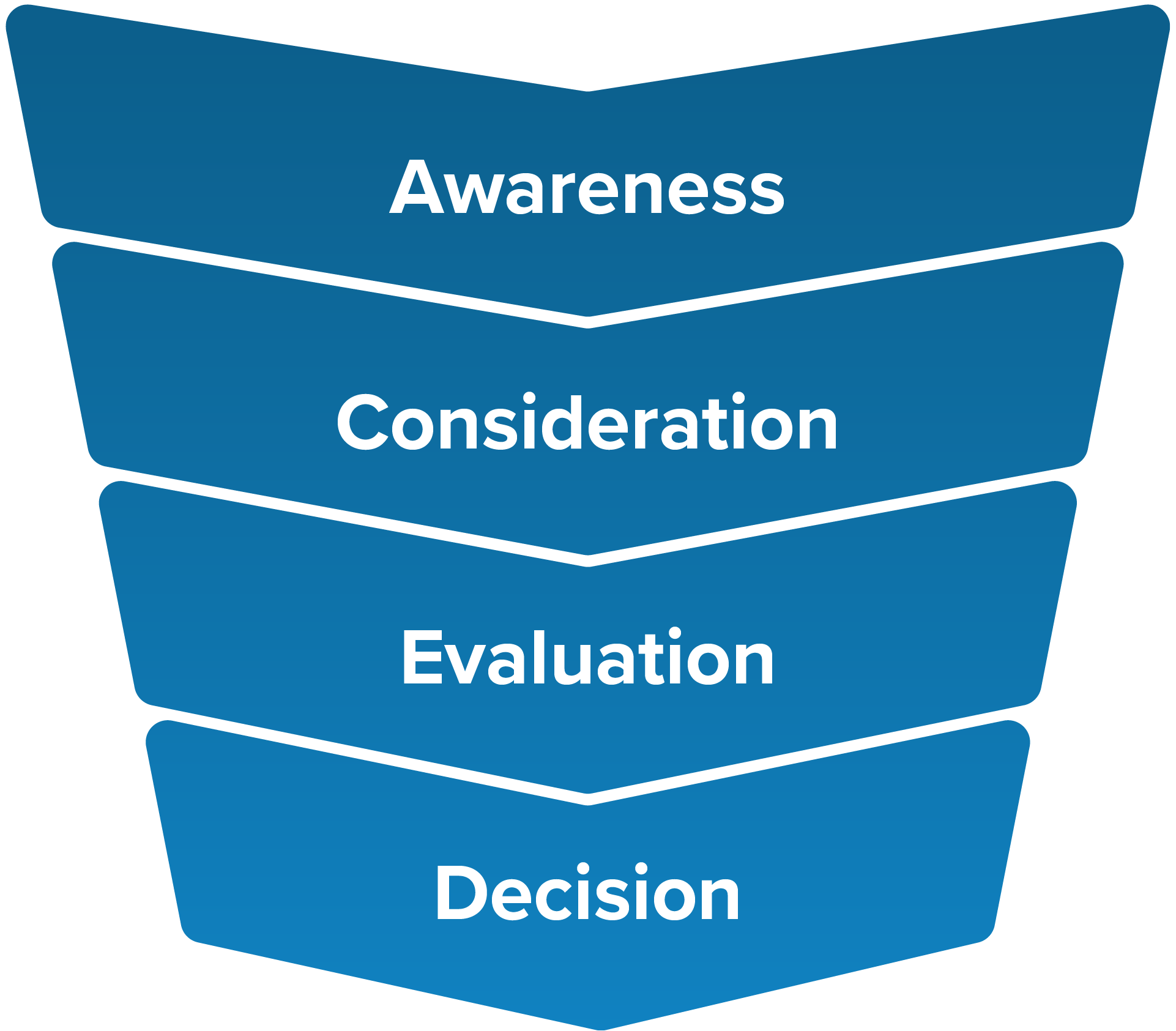
The above shows how the inbound marketing funnel works. It visually represents the active research process someone goes through leading up to a purchase.
The inbound methodology marketing team can use this framework to attract visitors to your website or social pages, convert them into qualified leads, help guide them through the sales process, and turn them into delighted customers.
Inbound marketing funnel stages
Inbound marketing relies on great content to get found by potential customers. Great content could be articles, videos, social posts, podcasts, research reports, guidebooks, and more.
But the thing is, you'll need different pieces of content for different stages of the funnel.
In each stage, there are specific digital tactics used to guide people toward a purchase.
(Remember, the top of the funnel is where people are further away from making a purchasing decision, while people at the bottom of the funnel are closer to purchasing.)
Let's go through each and explore the content that's best suited.
Awareness
The first stage in the inbound marketing funnel is to create awareness by attracting would-be ideal customers to your content.

These top-of-the-funnel prospects are generally looking to solve a problem, get an answer, or meet a need — but sometimes they're not even aware of their problem yet.
Some of the most effective components used to attract the right users to your website are:
- Written content optimized for search engines
- Social media posts
- Short-form video content
Here's what to know about each of these three parts of the process.
Written content optimized for search engines
Creating and publishing content is essential for any inbound marketing strategy. In 2022, videos and blog articles were the most common forms of content, according to HubSpot, and they both can be effective for building awareness and attracting attention.
Producing high-quality content that centers around your ideal buyer draws your target audience in and familiarizes them with your brand. This content should provide value to your audience by offering insights and solutions that align with their pain points and goals.
Some examples of this type of content include blog articles, video tutorials, social media posts, podcasts, and other content that's discoverable.
Search engine optimization (SEO)
To attract your target audience, optimize all of written content with an SEO strategy.
Incorporate the appropriate keywords into your content to drive potential customers to your website. You do this by focusing on keywords built around your products or services, the challenges you are solving for visitors, how your products can help them, frequently asked questions, etc.
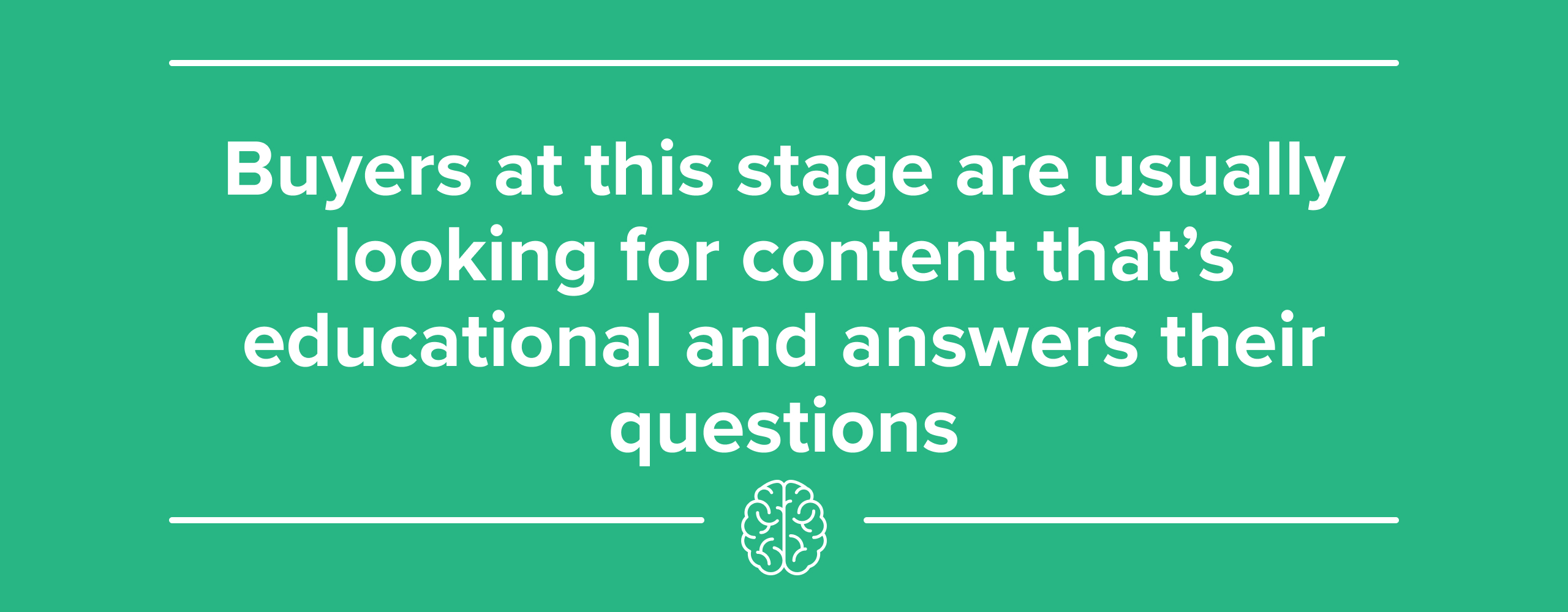
This will help your content organically appear on the search engine results page (SERP), giving you a better chance of the right fit finding you.
You can use tools like SurferSEO to help optimize your articles and other content, and Semrush to track performance.
Buyers at this stage are generally problem-aware, and they are usually looking for content that’s educational and answers their questions, so start there.
Social media posts and short-form video
Social media platforms are a great place for potential customers to discover you.
Find the platforms where your customers hang out, and create content that starts conversations and builds awareness.
Then, use the data you get back to tweak your messaging and your posts.
Short-form videos are a great way to spread awareness and distribute your message.
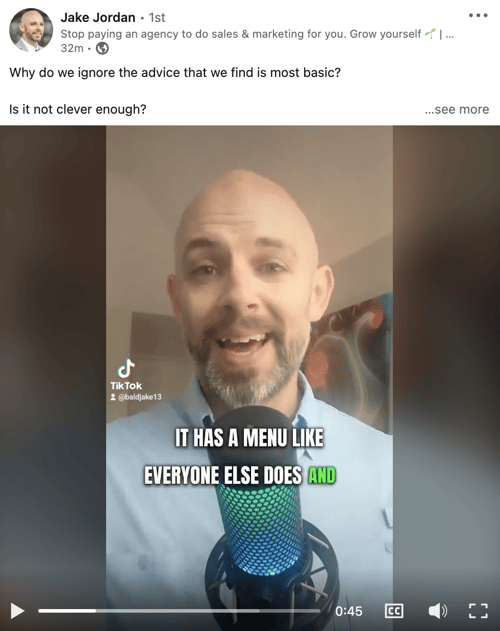
Consideration
Once visitors have found your social channel or website, you want to build a relationship with them and turn them into leads.
Some of the most important tools to employ when turning your visitors into leads include:
- Landing pages: A webpage that persuades users to download or sign up for content offers such as e-books, newsletters, webinars, free trials, etc.
- Forms: In exchange for content or something else of value, you want to obtain visitors’ contact data, such as their name, email address, and phone number. Forms are what your visitors will fill out to obtain that valuable content.
- Calls-to-action (CTAs): Text and/or a button on your website that tells the visitor what you want them to do next.
At the consideration stage, visitors are unlikely to be ready to buy.
So, instead of going right for the "book a demo" or "talk to a sales rep" step, prepare some transitional calls to action that are more aligned with a person in the consideration stage.
- Sing up for our newsletter
- Download our guidebook
- Register for our free event
In each case, you provide value and collect contact information.
For example, check out Kelsor's homepage. There's a traditional CTA ("Talk with an advisor"), but for people not ready to take that step, there's another big button offering a self-guided IT checklist.
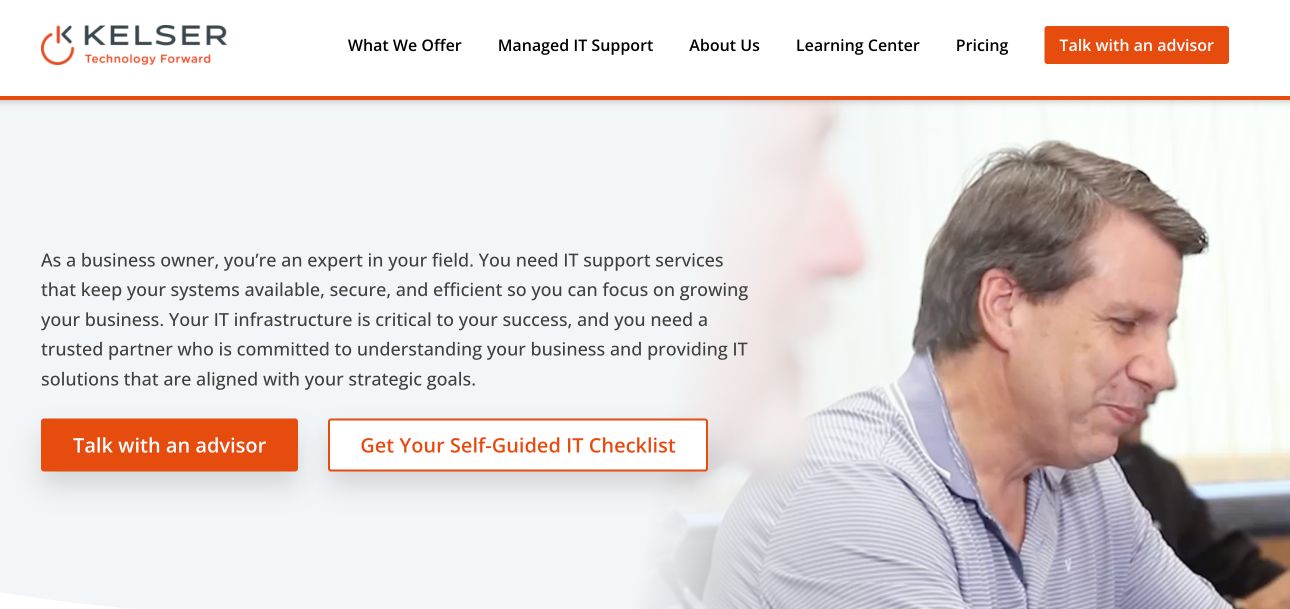
For potential customer, this is an easier step to take, especially if they're still in the consideration stage of their buyer's journey.
Evaluation
The “evaluation” stage of the inbound marketing funnel is where buyers are getting closer to making a purchase decision.
Converting a lead into a customer can be a long process in many businesses.
So, you need to continue providing helpful and relevant content to aid prospects in their decision-making journey using the following tactics and tools:
- Lead nurturing
- Marketing automation
- Customer relationship management (CRM) software
- Sales-enablement content
Here’s how:
Lead nurturing
Since leads are always at different stages of the buying process, you need to make sure you provide the right content and messaging at the right time to the right individuals.
This is called lead nurturing.
Through email, dynamic content, your website, and social media, you can nurture prospects through every step of their decision-making journey. Marketing can work in tandem with inbound sales to nurture leads through the buying process and optimize the conversion funnel.
Marketing automation
With digital marketing technology and software, you can automate marketing tasks. (According to HubSpot, 68% of businesses use automation in some way.)
Consider using marketing automation tools like HubSpot, Outgrow, or Seismic to automate tasks such as scheduling meetings, content delivery, contract generation, emails, text messages, and even reminders for your sales team to connect personally.
Customer relationship management (CRM) software
Using CRM software can help you better organize and access prospects and customer data.
For instance, since using HubSpot for marketing and sales automation for marketing and sales automation, our client ThoroughCare has worked with IMPACT to achieve remarkable growth, which wouldn’t be possible without the help of a marketing automation solution.
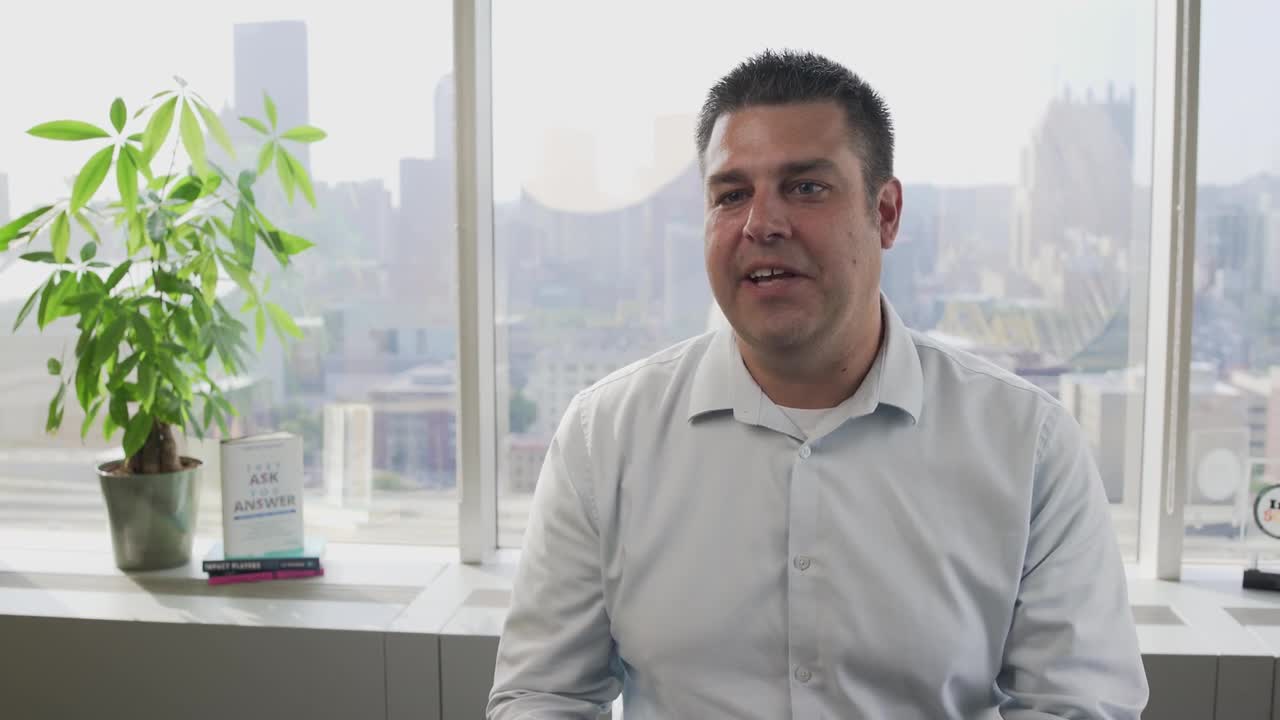
Sales-enablement content
When a buyer gets close to a final decision, they're looking for content that addresses their specific questions, worries, and concerns.
Enter sales-enablement content, which is used during the sales process to help these late-stage buyers.
Common formats include:
- Buyers' guides
- In-depth product comparisons
- Detailed price breakdowns (including what could make the price go up or down)
- Customer testimonials and case studies
Salespeople can use these before sales meetings (a process called "assignment selling") to address concerns before they come up.
Decision (and what comes next)
At last, we reach the bottom of the funnel, when a prospect makes the decision to become a customer.
Throughout the buying process — and especially in the final stages — companies can use content to help educate buyers and alleviate concerns that can hang up the sales process.
But it doesn't end there.
Even after you’ve made the sale, you need to continue to engage and delight your customers so you can grow your customer base.
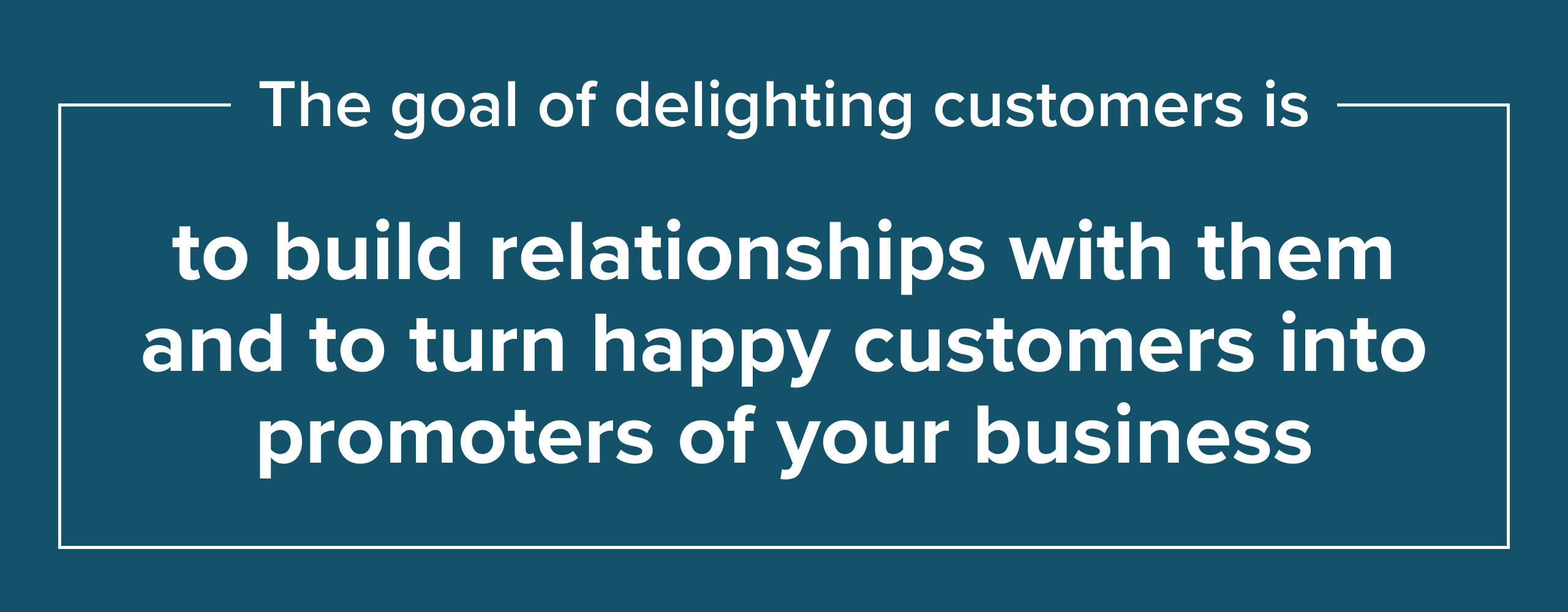
The goal of delighting customers is to build relationships with them and to turn happy customers into promoters of your business.
Your customers can be the biggest supporters or biggest critics of your brand, so don't ignore your buyers once the sale goes through.
Social media listening is a valuable customer relationship strategy because followers may use one of your profiles to share their experience, ask questions, or leave feedback about your products or services.
Respond to these interactions with helpful and supportive information — this shows you care about them and aren’t only looking for business.
Hilton, a multinational hospitality company with a broad portfolio of hotels and resorts, does an excellent job of mastering the art of delighting its customers.
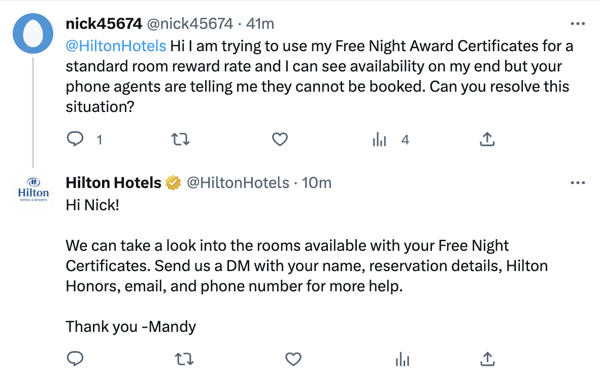
They created a social media listening strategy that enables them to be alert and respond to interactions whenever and with whomever. This genuine customer connection adds value to audience members, builds brand authority, and directly impacts the business.
It's also more likely to turn one-time customers into repeat customers.
Companies can use chatbots, loyalty programs, and surveys to support, assist, and delight customers.
Hilton, for example, offers a loyalty program for customers and offers incentives for guests to fill out a survey regarding their stay.
Boost business with the inbound marketing funnel
Inbound marketing is all about providing outstanding and helpful content to your audience, whether they are visitors, leads, or existing customers. This can be done in the form of blog articles, social media posts, newsletters, free trials, case studies, reviews — the list is endless.
You achieve the best inbound marketing results through digital channels and tactics that allow you to deliver specific and rewarding content for your leads and customers at the right time based on where they are in the buyer’s journey.
* This article was originally published here
Wednesday, July 26, 2023
A Sales Presentation Is Not What Your Buyers Are Looking For
There's a good chance your team's sales presentations are bad.
Trust me.
While I may not have viewed yours specifically, I feel pretty confident in making a broad generalization here: Most sales presentations are terrib;e. If they’re anything like the ones I’ve seen from my early-stage clients — and the hundreds I watched as a COO — they’re boring, overstuffed, and tone-deaf.
You know those first dates when you hear the person drone on and on with what sounds like a resume — all while you’re trying to finagle an exit?
Yeah, many sales presentations are the business equivalent of that.

You think you’re owning the room, but you’re actually losing prospects in the first few minutes. And a whole bunch more are falling off along the way.
This has reached epidemic proportions, and as a business coach, I see it as my job to stage an intervention.
The first step is understanding that you have a problem.
So say it with me: My sales presentations are bad — and I’m going to make them better.
Why the sales pitch is lazy (and outdated)
I see what you’re trying to do, but you’re going about it all wrong.
You think that your buyer wants to see slide after slide of features and details to prove the quality of what you’re selling.
No. They don’t want that.
A sales pitch is a firehose of information, with a bit of cajoling thrown in. Whether your pitch comes in a packet, a slide-deck, or a talk track, the effect is the same: You might make even the most interested prospect start to glaze over.
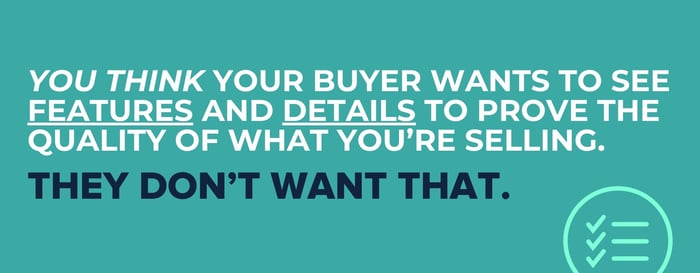
People don’t take in information that way. And you’ve chosen the wrong time to share it.
‘But Chris, don’t you say we need to educate our clients?’
Yes, you do. But here’s the thing: The sales meeting is not the time to be educating. Let me repeat that: Do not waste your precious time with a customer droning on and on about what you sell.
You should use the time before and after the meeting for education.
During the meeting itself: Focus on listening and asking questions. Tune in to the prospect’s problems and challenges. Ask follow-up questions to get to the heart of what they’re struggling with.
Spend 30% of your time talking and 70% listening.
Do this, and you build a relationship. You’ll be seen as someone who understands the client’s needs. Someone they can trust.
Be the salesperson who listens. Be the salesperson who’s trustworthy.
Let your buyers self-educate before the sales meeting
Too often, sales reps treat their pitch deck like a secret treasure. They hold it close to the vest, not letting anyone see it before the meeting starts.
Why?
What’s so bad about sending all the information to the buyer ahead of time so they can review it? That way, you don’t have to talk through and explain everything. They have the reference materials they need to find the information they’re looking for.
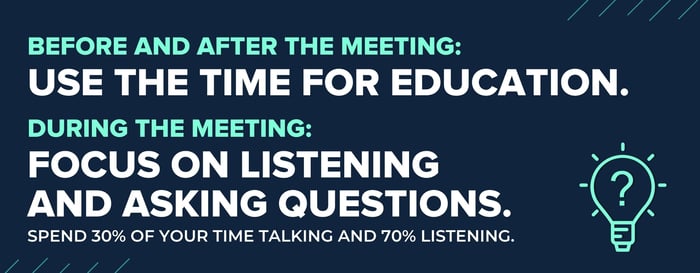
Or, split it up and share some details after the meeting. Imagine if, at the close of the meeting, you say, “Now that I better understand your needs, I’m going to send you some information about our product and how it could help.”
Compare this to how you’re ending meetings now.
The overconfident salesperson is the unprepared salesperson
If you ever hear salespeople at your company say something like, “I got this, I know how to sell X, I’ve given that presentation a hundred times,” you’ve got bad sales reps. You might have an inept sales team.
Running through the same tired routine is the quickest way to show prospects you’re phoning it in.
Often, these overconfident sales reps are the same ones who seem blindsided by questions and bungle their way through the presentation they’ve “given a hundred times.”
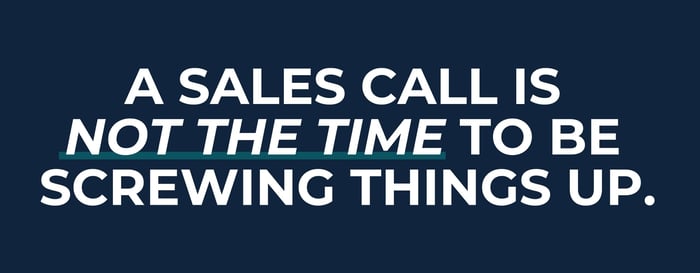
They are the same ones who might struggle to share their screen, and they can’t remember if other people in the call can view their mouse. They stumble through the basics of the presentation they've given a hundred times.
When unpreparedness masquerades as overconfidence, sales calls go poorly.
And let me say this once and for all: A sales call is not the time to be screwing things up in front of your potential customers.
A different kind of preparation
The most successful salespeople prepare and rehearse so they’re ready for the call — and they leave plenty of room for conversation. According to research by Gong, the best sales reps listen much more than they talk.
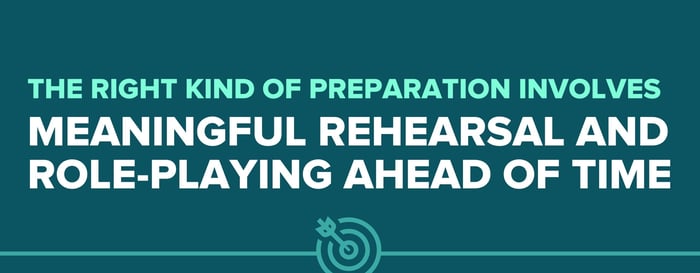
The right kind of preparation involves meaningful rehearsal and role-playing ahead of time so you can go into a meeting:
- Knowing when you plan to share your screen (hint: it should be as little as possible)
- Knowing how the technology works and how to troubleshoot on the fly
- Anticipating questions the prospect might ask (so you can address them before they’re even asked)
- Having memorized the names of everyone at the meeting
This is the kind of preparation that matters. It keeps your buyer at the center of the meeting.
Remember, it’s not about you, it’s about your buyer
The sales pitch is a holdover. A dinosaur. In the pre-internet age, salespeople had all the information — and they were the conduit to provide that information to customers.
Things have changed.
Today, buyers spend most of their time self-educating, so by the time they reach a sales meeting, they are pretty well informed. According to research from Gartner, customers spend less than 20% of their “buying time” actually talking to a salesperson.
At that point, they don’t need a pitch or an over-stuffed presentation. They need a real conversation about meeting their unique needs.
Until you’re ready to do that, your presentations will continue to hurt you more than help you.
Want to take a step to improve your sales calls? Talk to one of our coaches to see how we can help.
Author: cduprey@impactbnd.com (Chris Duprey)
* This article was originally published here
Tuesday, July 25, 2023
Monday, July 24, 2023
HubSpot CRM Review — Pros and Cons
Originally developed as a marketing platform, HubSpot now provides tools for marketers, sales, and customer service teams to accomplish a range of tasks across the customer lifecycle.
As a CRM (or customer relationship manager) it stacks up against competitors like Salesforce and Zoho for its ease of use and scalability.
Below, we'll cover the pros and cons of the popular software. But we forewarned, we are brazen HubSpot fans. We use it ourselves — and we advise most of our clients to use it as well.
Nevertheless, we know the tool isn't perfect. And we'll provide an unbiased review of the platform, both pros and cons, so you can make up your mind on your own.
Let's jump in.
HubSpot basics: Hubs and tiers
First off, HubSpot has three main software hubs: Marketing, Sales, and Service. They don’t function as separate platforms, but they are purchased separately.
In HubSpot's own words, here's what they each do:
- Marketing Hub: “Everything you need to launch effective marketing campaigns that make people interested in your business and happy to be your customer.”
- Sales Hub: “Get notified the moment a lead opens your email, track every interaction automatically, and organize all your activities in one place with HubSpot’s sales software. Start for free, and upgrade as you grow.”
- Service Hub: “Customer service software that builds organization and efficiency into your customer service team.”
These are all part of HubSpot's CRM, but you might not need all hubs. Many companies start with a single hub and gradually expand.
And while we're at it, you should know that each Hub has four distinct pricing tiers, from most basic to most sophisticated: Free, Starter, Professional, and Enterprise. As you move up tiers, you get more and more functionality and tools, and fewer limits on the tools you have.
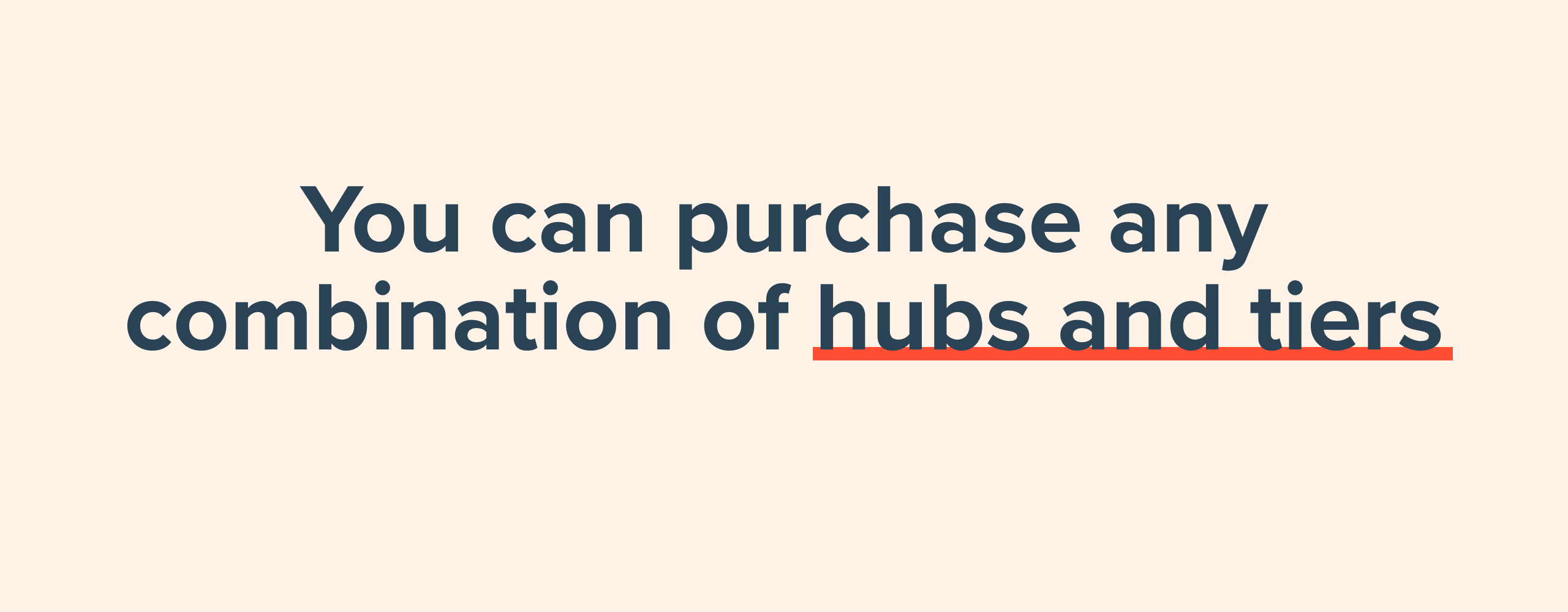
You can purchase any combination of hubs and tiers. For example, you could start with Marketing Hub Enterprise, Sales Hub Starter, and Service Hub Free. However, HubSpot does offer a discount if you purchase the entire Growth Suite (all three hubs) at a single level.
Okay, with those nut and bolts out of the way, let's get into pros and cons.
Pro: HubSpot is free to start
One of the first things you’ll see on HubSpot’s pricing page is their “Free Forever” CRM, where you can store an unlimited number of contacts, companies, deals, and tickets.
This is awesome.
While many CRMs offer a free version, HubSpot's is pretty robust.
(The main caveat to this “unlimited” storage is when you start using a paid version of the Marketing Hub. As soon as you switch to a paid Marketing Hub contract, you’ll have to pay per 1,000 contacts on an ongoing basis that are stored in the CRM.)
Pro: HubSpot grows with your business
HubSpot loves working with startups and small businesses, and the software can scale with your business as you scale as you grow.
There's even a HubSpot for startups program where you can get a 30% to 90% discount if you’re early on in your startup funding.
HubSpot was initially geared toward small to medium-sized businesses, which was their core customer base for a long time, so there's no barrier to entry to get your business going.
You can upgrade as you go.
As you progress to the Starter tier, you have access to more tools, such as meeting scheduling, live chat, and conversation routing. Once you get into Professional- and Enterprise-level accounts, you unlock features such as sales analytics, sequences, hierarchical teams, and even 1:1 video for sales.
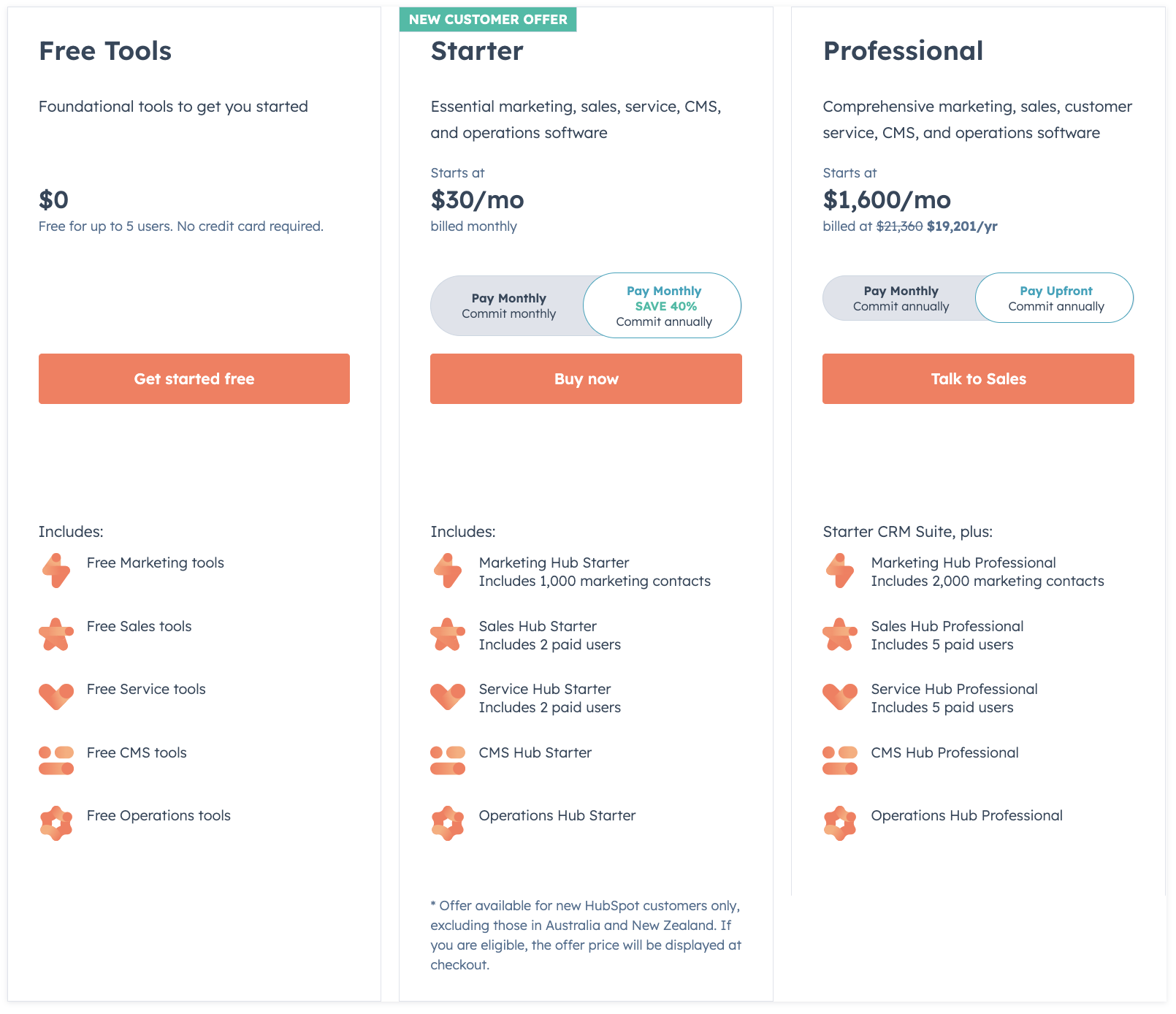
This is one of the reasons we introduce HubSpot to our clients. Many companies IMPACT works with are small businesses that don’t immediately have the funds to go with the larger, more expensive CRM platforms.
Being able to still track ROI and lead behavior can be invaluable in helping newly formed businesses grow.
Pro: HubSpot has an easy-to-learn user interface
HubSpot has always been easy to use compared to other CRMs and marketing automation platforms.
Over the years, HubSpot CRM reviews and the vast majority of users have found the user interface (UI) highly intuitive. This can be helpful for people who like to get more technical (such as getting nerdy over tools such as Google Analytics), but don’t want to spend time figuring out how to do something or how it works.
For example, if you’re in a HubSpot contact record, you can see everything associated with that contact right there.
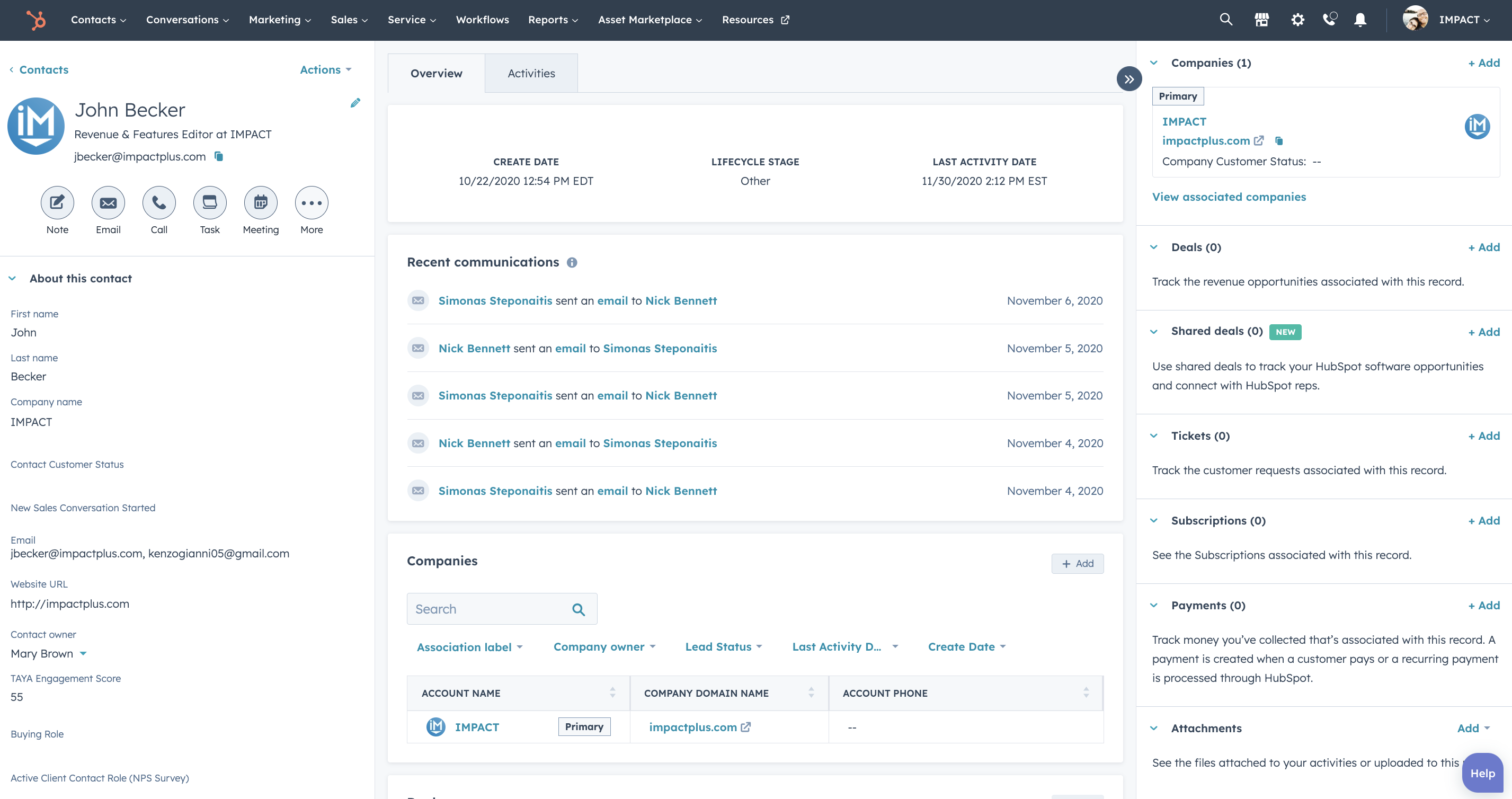
Including the web pages they’ve visited, emails they’ve opened, and how often they return to your site.
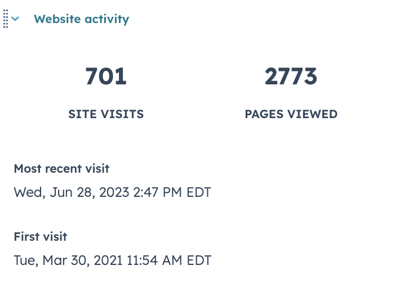
HubSpot takes all of this into account, and it’s more user-friendly than some of the midmarket and enterprise-level CRMs.
These CRMs tend to be more customizable than HubSpot, but that can also make using them a bit clunky and more difficult to use.
🔎 Related: Get your sales team using your CRM platform in 5 easy steps
Pro: HubSpot has great customer service
HubSpot’s customer support is excellent. The support team is easy to access; you can chat with them, email them, or call them if you have a paid subscription.
They also offer customers access to HubSpot Academy, which has a ton of courses where you can learn things, from the basics (What is inbound marketing?) to the highly technical (Powering your website with CMS Hub Enterprise).
On top of everything offered by the company, there is also a vibrant HubSpot community of regular users and developers eager to help — as well as HubSpot User Group meetups all around the world.
Pro: HubSpot integrates with Gmail and Outlook (you can work out of HubSpot, or your inbox)
So many sales reps live in their inbox, and most are either using Outlook or the Gmail suite. They need sales software that works where they do. HubSpot integrates seamlessly with both.
This means that while you’re emailing a customer, you can see all of the contact information and lead intelligence available for them. You can even enroll contacts into automated sales follow-up sequences, right from your email.
This is especially helpful for assignment selling — when your sales team "assigns" educational content to their potential customers to answer most of their questions up front, making meetings that much more productive.
As you’re communicating with your customers, the sales software allows you to see in real time which pieces of content they’ve seen and how prepared they may be for your meeting.
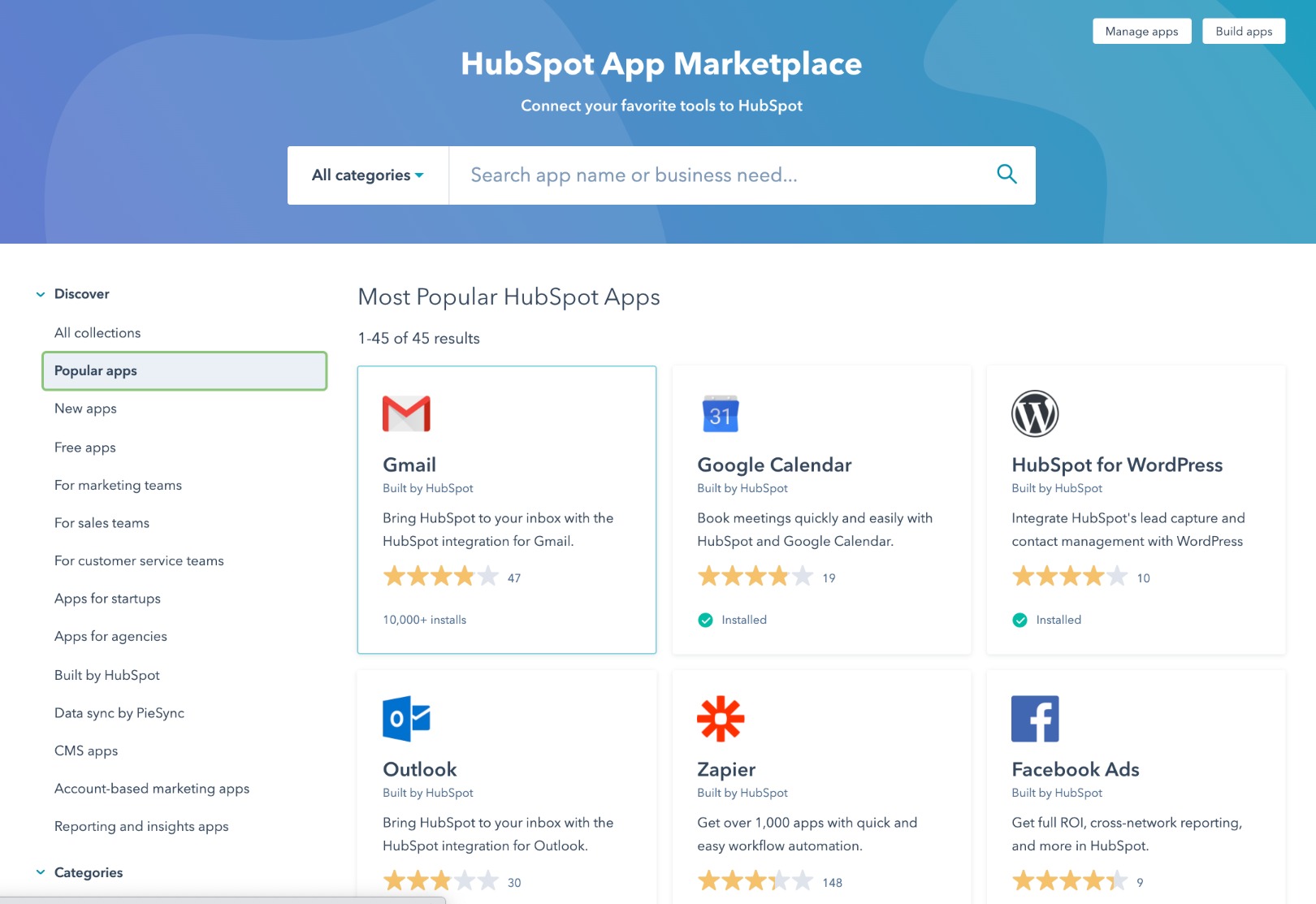
You can access the HubSpot App Marketplace (seen above) to check out nearly 1,500 other integrations.
Pro: HubSpot offers out-of-the-box reporting for sales reps and managers
For Professional- and Enterprise-level HubSpot CRM users, the software offers a tool called Sales Analytics that has pre-built reports you can customize and adjust.
It’s easy to navigate data, such as sales close-rate reports and trends over time, and you can view them based on one sales rep or the entire team.
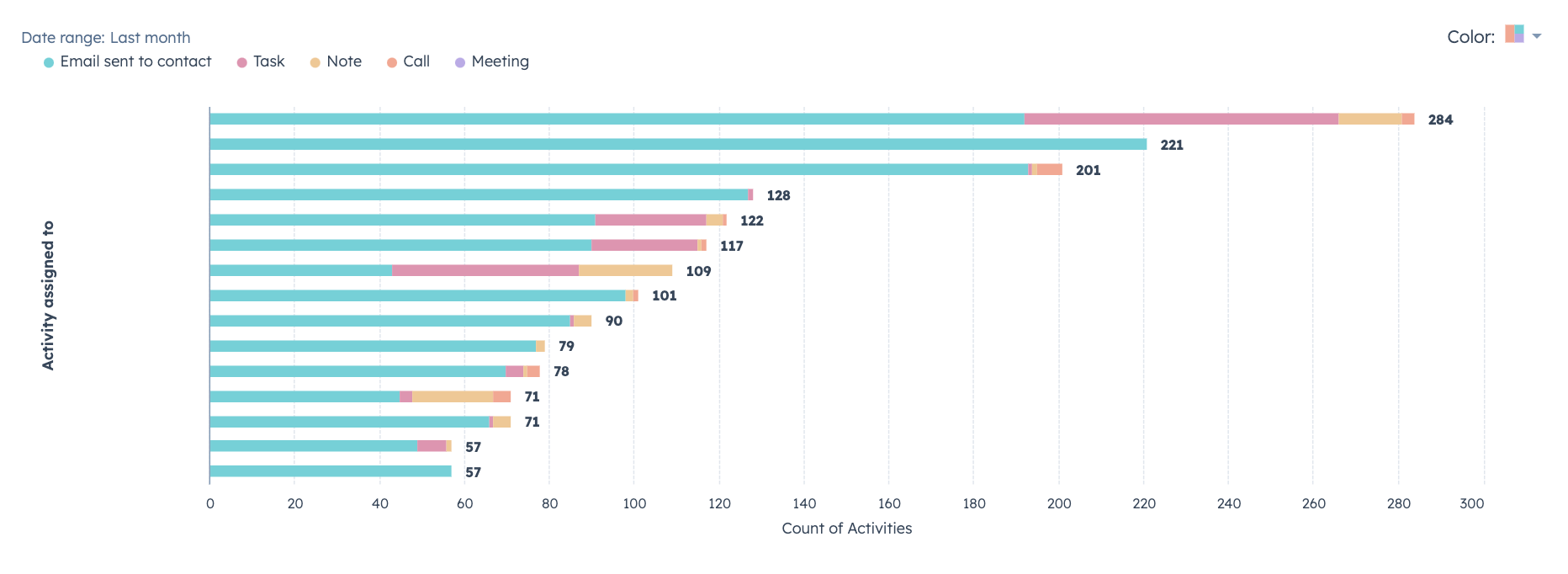
With most other CRMs, these reports need to be custom-built by an operations person who knows the data and can customize them.
HubSpot has built the tool so that any rep or sales manager can pull reports up for themselves or their teams, and they don’t have to build them from scratch.
Pro: HubSpot combines marketing, sales, and customer service on one platform
Most companies use separate systems for their marketing, sales, and customer service platforms, which can cause confusion between teams and extra work.
If those different platforms don't get along, you're headed for data discrepancies and further team siloing.
Having all teams in one system enables what HubSpot calls flywheel-type reporting, where you can see the first time a customer landed on your website, the pages they viewed, and all the way through their entire sales and customer service history.
This saves your teams from having to find the information in a different system or ask someone else. All those actions add time and complexity to your customer relationship management process.
Pro: HubSpot invests significantly in ongoing R&D
As far as research and development goes, HubSpot is constantly investing in ways to bring new features and functionality to its customers.
As they make updates to programs and tools, you can access a new-product feed in your portal that updates you on any new features added based on your subscription level.
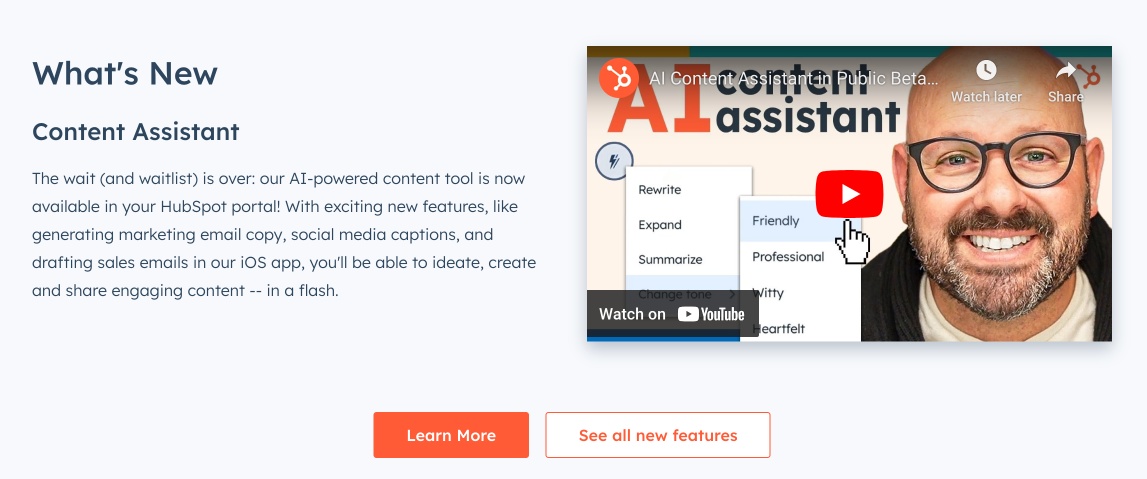
With all those pros in mind, let's flip to the other side and start looking at some of HubSpot's cons.
Con: HubSpot is still relatively new to the enterprise space
When you look at CRMs built for midmarket and enterprise-size companies, the vast majority have been around for a long time (most since around the 1980s and '90s).
HubSpot was started in the 2000s, but its bread and butter market was SMBs. In fact, HubSpot only really developed tools for enterprise-level companies only in the past five years.
And they're are still developing features to make their enterprise tier more robust.
Big companies with huge sales teams might not trust a platform that is newer to the space — versus CRMs that have been around forever, such as Salesforce and Microsoft Dynamics.
(Even though these platforms typically cost more than HubSpot and can require more time and energy to set up and train people on.)
Con: HubSpot is less configurable than other enterprise CRMs
Sometimes HubSpot users get frustrated when they can’t create customizable features that do user-specific functions for niche businesses or industries.
HubSpot’s position has always been to discourage users from customizing too much — and there’s a reason for this.
HubSpot has always taken the stance that too much customization can slow things down. Instead, they've opted for a clean, easy to use interface that's highly efficient.
When other big-name CRMs are highly customizable, the implementation of that CRMs can often take several years, and if a business’s sales process changes, the CRM would need a complete overhaul.
Ready to get started with the HubSpot CRM?
So there you have it. A bunch of pros, a few cons. (After all, there's a reason HubSpot has grown at a furious rate over the past dozen years.)
The HubSpot CRM software has become a fundamental tool in helping marketing, sales, and customer service teams do their job more efficiently.
If you're a small business looking to get started with HubSpot, we're here to help. We can provide the training you need to get more out of the HubSpot tool suite.
Because when you've got better data, you can make better decisions.
Author: jbecker@impactbnd.com (John Becker)
* This article was originally published here
-
10 SIDE JOBS TO EARN AN EXTRA $100 DAILY Start Earning Money Fast With Internet Marketing - Subscribe Here! Via Make Money Online Channel...
-
Mobile app design is in the midst of a never-before turmoil and trans...
-
6 things travelers should know in the age of coronavirus contagion SF Gate * This article was originally published here ...